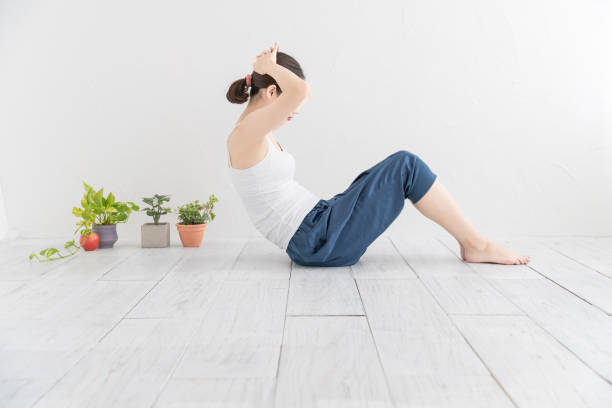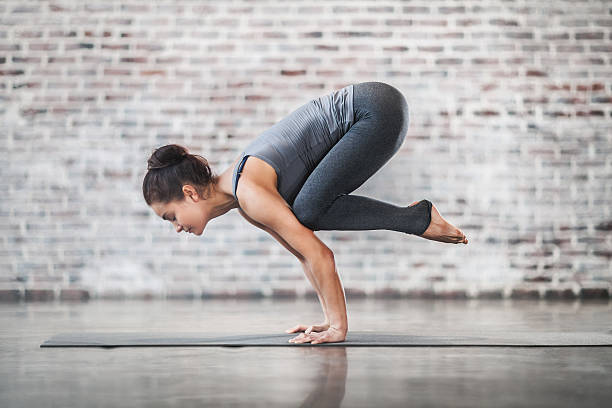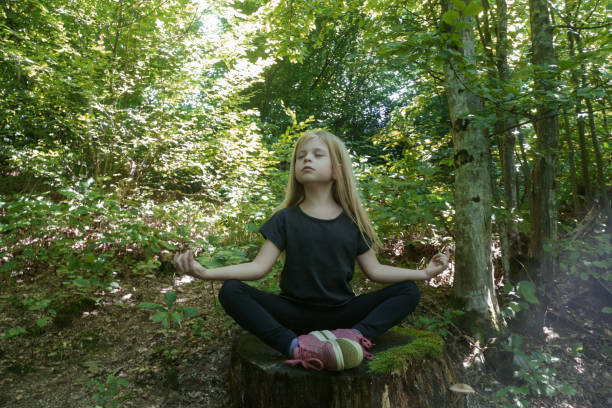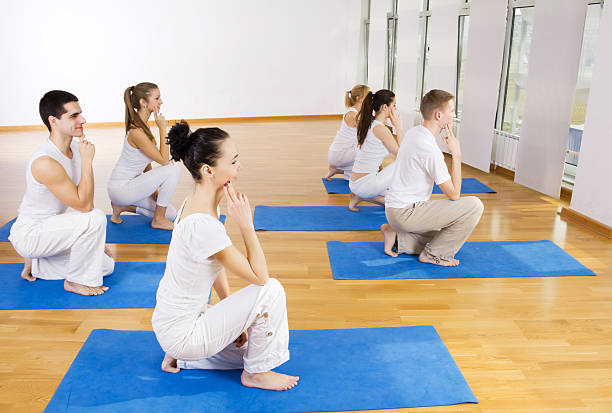
Maintaining good posture can be a challenge for those with desk-centered day jobs. As a former employee of a large Canadian financial institution, I am all too familiar with the effects a desk job has on posture.
The body may start upright, but as stress builds, it will begin to slump. The spine starts to round, and the shoulders begin to roll forward.
It has a negative impact on posture and puts a lot more stress on the lower spine. If the lower back is rounded, there is a greater chance that a lower spine nerve root will be compressed, which can cause pain and numbness.
Stretching the hips and, in particular, the psoas can help relieve lower back pain. It can also be beneficial to restore length in the lower back by using forward folds and gentle twists.
Here are five yoga poses that can help relieve lower back pain.
Sucirandasana, Thread the Needle Pose
Bend your knees while lying on your back so that both soles of your feet are flat on the floor. Place your right ankle on your left thigh close to your knee, creating a figure 4. Flex your right foot to protect and stabilize the knee.
Interlace your fingers on the left hamstring with your right hand. As you inhale and exhale, pull your left thigh toward your body. This can be deepened by pressing your right elbow gently against the inner right leg. Then, switch sides.
Utthan Pristhasana, Lizard Pose
Step the right foot outside the right hand to align the feet and hands. Lower the left leg to the mat and, if your body permits, lower both elbows on the floor.
Lizard Pose is an intense hip opener. Focus on exhalations, and let the pelvis sink to the ground. Keep the Lizard Pose for 1 to 2 minutes, then switch sides.
Pigeon Pose, Eka Pada Rajakapotasana
Bring the right leg forward, towards the right edge of the mat. The right foot is mostly on the left side of the mat in front of the left hip. Any knee pain should be taken into consideration.
Your hip flexibility will determine whether the right shinbone is parallel or at an angle. Start by lowering the spine down and forward. Start by pressing the pelvis toward the back heel.
You can hold this passively on either side for up to three minutes. Repeat the thread-the-needle pose if you are unable to do this due to knee problems.
Dangling Pose, Uttanasana
Start by placing your feet about hip-width apart. Inhale and lift your heart. Exhale and hinge forward from the hips. When we want to create more space in our lower back, bend the knees to bring the lower ribs closer to the thighs.
This is an indication of a long, spacious spine from the tailbone down to the base. Holding on to the forearm or elbow of the opposite side, let the head fall to the ground with each exhalation. Hold for 1 to 3 minutes.
Supine Spinal Twist, Supta Matsyendrasana
Bring your right knee to your heart while lying on your back. Cross the knee with your left hand towards the left floor. Take your right arm and cross it over to the left side.
Exhale evenly through your shoulders. Hold the twist for five to seven breaths, then do the opposite side.
Bonus: Locust pose, Salabhasana.
As you lie on your stomach, extend your arms behind your body and grasp your hands. Press your palms firmly together. Inhale, and then lift your chest and legs. As you continue to breathe, lift your chest and legs while clasping your hands.
Hold this position for approximately 5 to 7 deep breaths. After you have released, move into a child’s pose.
Include a savasana in your practice no matter how long it takes. Place a towel rolled up under the lower back. This will help to maintain its natural shape.


